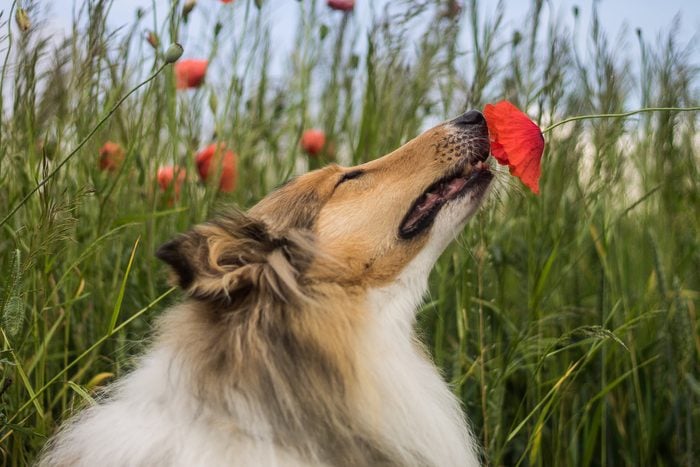
Dogs with the most loveable snouts
You may look at your dog’s long, elegant nose and narrow face and see the picture of canine beauty and perfection. He’s simultaneously dignified and cute, distinguished and cuddly. So it might surprise you to know that there are a lot of genetics behind that long schnoz, and centuries, if not millennia, of targeted breeding. With a few exceptions (we’re looking at you, Dachshunds), long-nose dogs were bred for hunting. Whether they’re sighthounds (those that rely on sight and speed to hunt prey) or scenthounds, which search by smell, long-nosed dogs were long prized for their superior skills at helping hunters track and capture game animals.
Nowadays, these doggies, known as dolichocephalics—the term for animals whose skulls are markedly longer than they are wide—are probably just as content to snuggle on the couch with you are they are to chase down a fox or a deer, though most do need regular exercise.
Let’s take a look at these long-face dogs and why they are adored by their human companions. If you’re thinking of owning one of these long-nosed dogs, check for local breed-specific rescue groups that may have purebred dogs in need of a loving home.
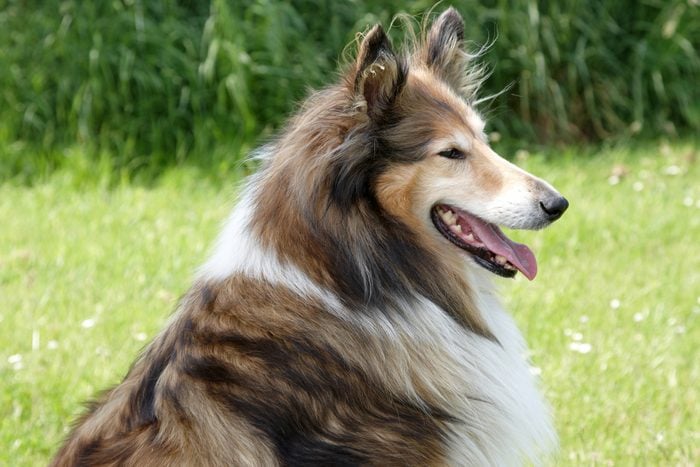
Rough collie
Lassie, one of the first canine stars of TV and film, was an all-around heroic farm dog. Today’s rough collies are probably more content to snooze on a cool tile floor than they are to herd cattle or rescue Timmy from a well. But the medium build, long-haired, long-nose breed rough collie is still a great family dog—extremely intelligent, loyal, and watchful over little kids. Keep in mind that those luxurious coats need a lot of regular brushing, so do stock up on grooming supplies. Collies can’t handle long periods of heat or running, and they don’t like to be left alone for extended periods. They’ll bark when they’re bored or lonely, so apartment dwellers take note.
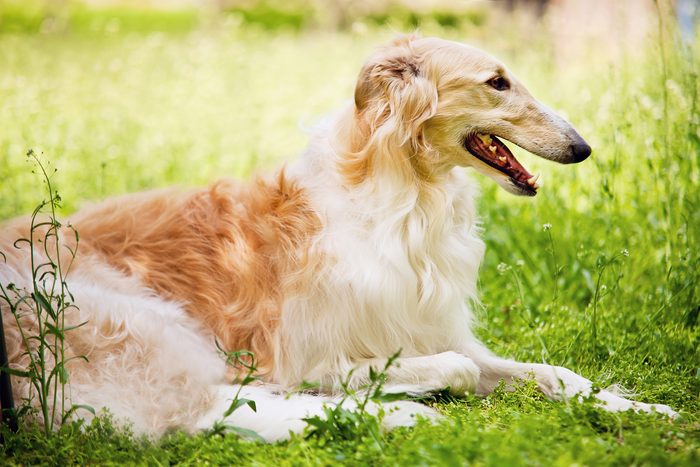
Borzoi (Russian wolfhound)
In the contest for which dog has the longest snout, the Borzoi, also known as the Russian wolfhound, wins by—what else?—a nose. Bred in Czarist Russia for hunting foxes, wolves, and other fast-moving prey, the Borzoi is a silky-coated, fleet-footed sighthound. It can stand around 30 inches tall, and the longest nose ever recorded on a Borzoi measured more than 12 inches! Yet this breed is a chilled-out, calm couch dog content with short bursts of exercise. Experts also say they have a strong chase instinct, so should not be allowed to run loose in unfenced areas.
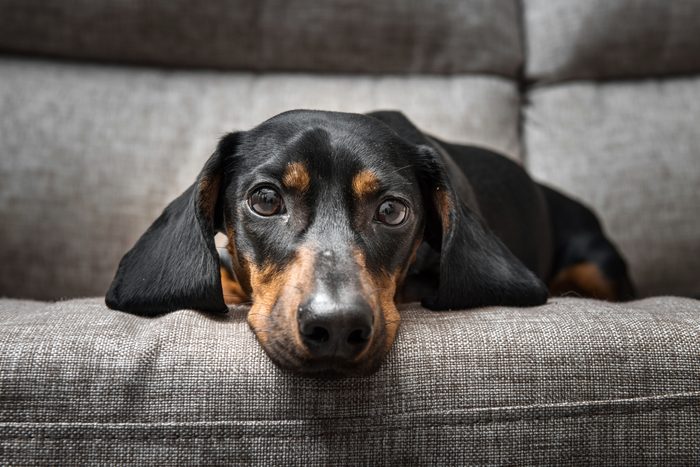
Dachshund
Long ears, long tail, long body, long nose, short legs! That about describes the Dachshund, a perennially popular dog breed loved for its comical looks and friendly demeanor. Yet Dachshunds were originally bred to be fearless hunters, ready to chase a fox, badger, or another burrowing animal down a hole. Today’s playful Doxies may still have a strong kill instinct, usually demonstrated on their short-lived toys (time to invest in indestructible dog toys). They tend to bond to one person, so it takes some work to get them integrated into a household. Dachshunds come in long, short, and wire-haired varieties, as well as in miniature, middy, and standard sizes.
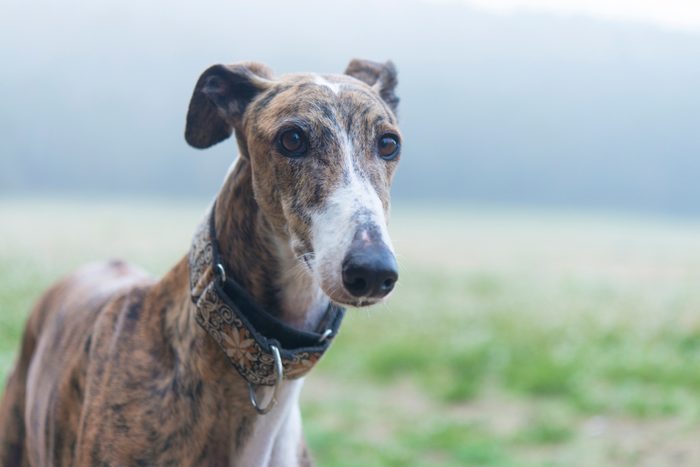
Greyhound
Fortunately, greyhound racing is banned in all but four U.S. states, and greyhounds are now much more popular and better off as companion pets. Known for their docile nature, these tall, lean, long-nose beauties are surprisingly well-suited to apartment living—as long as they get regular walks, they do just fine in small quarters. They need minimal grooming, but because of their short coats and lack of body fat, they need a coat in cold weather. Because of their ingrained chase instinct, greyhounds, one of the fastest dog breeds, shouldn’t be allowed to run off-leash in unfenced areas and should be carefully introduced to smaller dogs and cats.
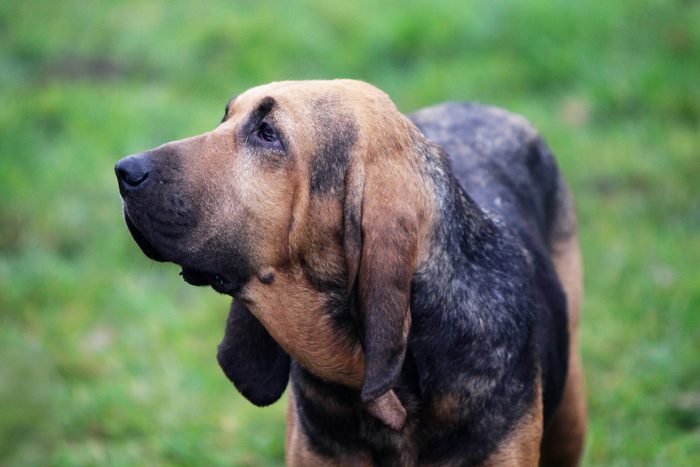
Bloodhound
Prized for their acute sense of smell, bloodhounds have long aided law enforcement in sniffing out wrongdoers or missing persons. So if you decide to keep a bloodhound as a pet, don’t expect you’ll be able to hide the pizza from him! Bloodhounds are sweet and loyal family dogs, but they’re also stubborn and need a lot of consistent training. Despite their long faces and droopy expression, bloodhounds have a lot of energy and are not one of the best apartment dogs—a fenced yard is best. Oh, and these guys drool—a lot.
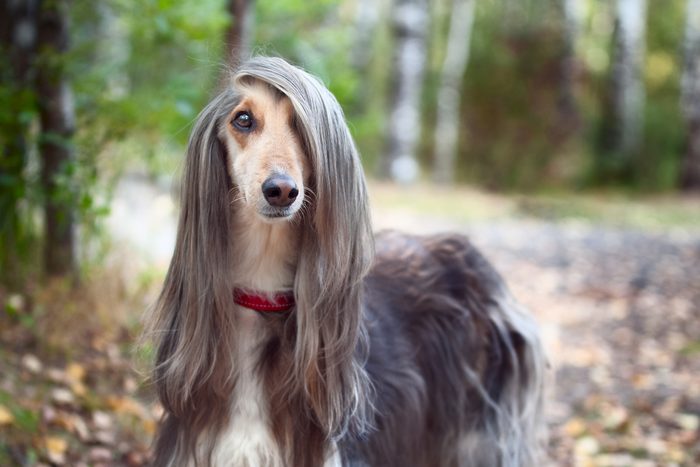
Afghan hound
The supermodels of the dog world, Afghan hounds are also one of the world’s oldest dog breeds—they’ve been around for thousands of years. Originally bred for chasing and cornering large prey, Afghan hounds still have a strong prey instinct, so may not be suitable for homes with smaller animals. They are at turns affectionate and aloof, and will seek cuddles or playtime only when they’re in the mood for it. Yet Afghans are almost always gentle, and rarely barky. That long, silky coat requires a major commitment, though, either to regular brushing or professional grooming.
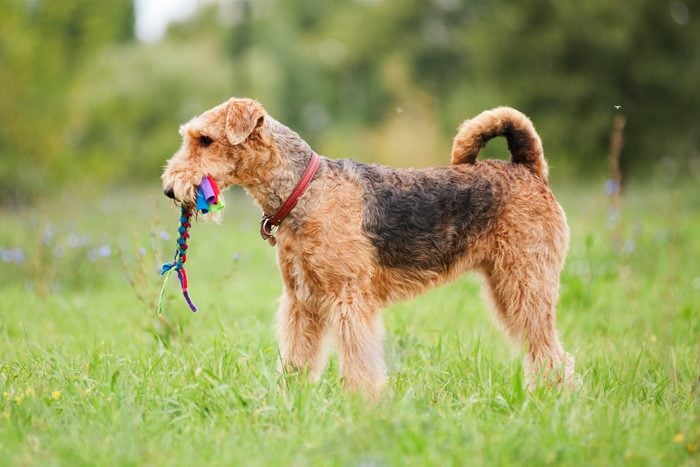
Airedale terrier
They once roamed the docklands of Britain, hunting rats and otters, and Airedale Terriers still have a lot of the characteristics of working dogs—they’re extremely intelligent, active, and need a lot of stimulation, including puzzle toys, and steady training. These sturdy dogs love long walks or runs or racing around a fenced-in yard. Stubborn and determined Airedales respond well to obedience school. Playful and mischievous, these intrepid pups like to act like clowns—really, really smart clowns. This is a dog breed that will keep you on your toes, so be sure you’re ready to fully commit. Free-spirited Airedales are not suited for apartment living.
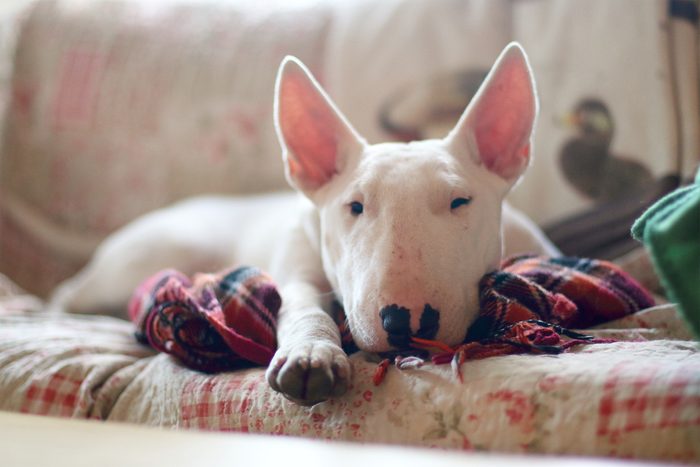
Bull terriers
If you really want a dog with a big nose, look no further than the bull terrier. These oddballs of the dog world are known for their curious, egg-shaped head, long, arched nose, and compact, muscular body. Despite being bred as a fighting dog, bull terriers are highly affectionate family dogs who crave human company and tend to shadow their family members. They’re a breed that will do well in an apartment and don’t tend to bark very much, but they also don’t do well when left alone for long periods of time and might get destructive.
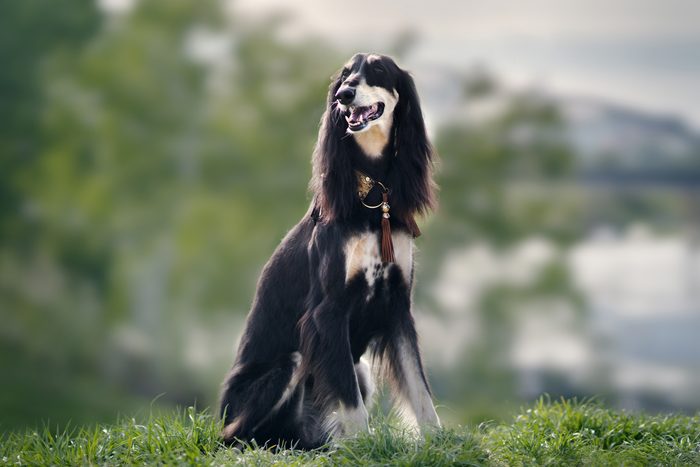
Saluki
This unusual dog breed is also an ancient one, originating in the ancient Middle East. Salukis were used to chase down and kill running prey like foxes and gazelle, and these long, tall, sleek canines still have a strong prey instinct. They’re not recommended for homes with small animals, nor can they be trusted off-leash in unfenced areas. Best for a home with a fenced yard and an owner dedicated to their training, this interesting breed is loyal, if a bit aloof, and will years of provide quiet, alert companionship.
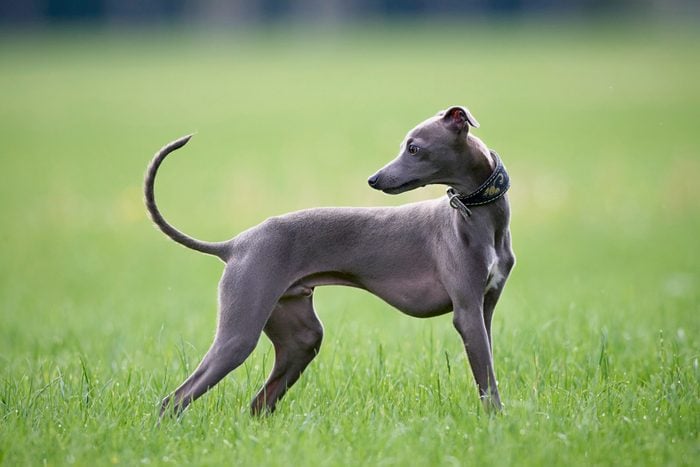
Whippet
Like other sighthounds, sleek Whippets were bred to chase rabbits and other fleet-footed prey. Today, they’re loved for their tender expressions, playful nature, and adaptability to most families. Because they still retain a strong prey instinct, Whippets aren’t recommended for homes with cats and other small animals. But they’ll bond with family members and are great with kids. They should be socialized early on, as they can be a bit timid. Give these short-haired, skinny dogs a warm dog bed indoors, plus a coat for cold-weather walks.
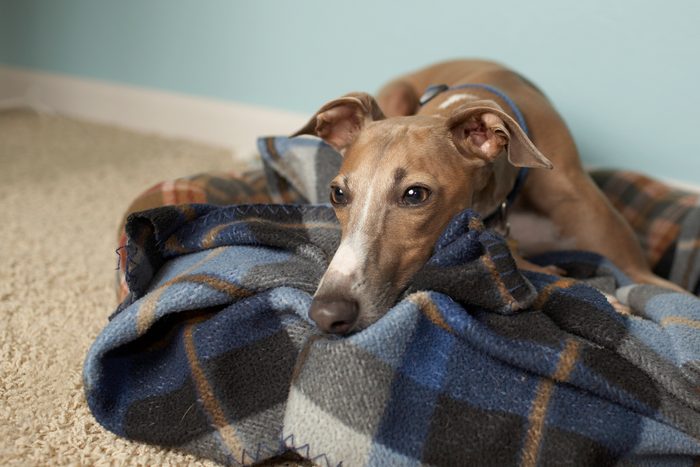
Italian greyhound
At just over a foot tall at the shoulder, the Italian Greyhound is the smallest long-nose dog on our list. This adorable little charmer will quickly bond with family members but may be a little shy around strangers. Because they were bred for running down small game, Italian greyhounds will chase anything that moves, so a firm grip on the leash is required. Italian Greyhounds are highly suited to apartment living, but not to being left alone for long periods of time. These guys love long walks and run, or a fenced-in area where they can roam free.
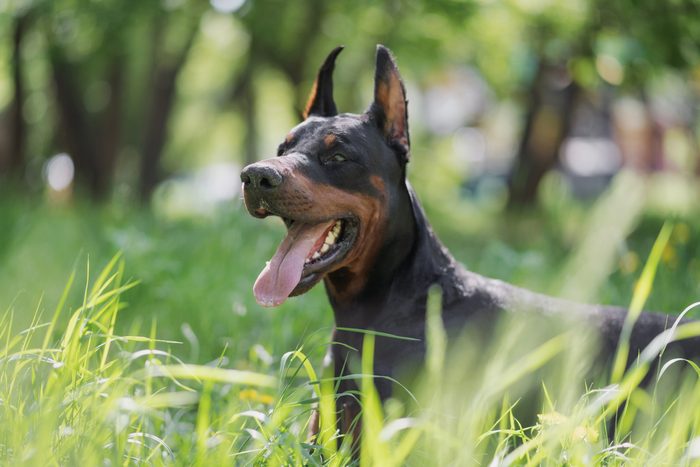
Doberman Pinscher
Trustworthy, loyal and protective, Doberman Pinschers get a bit of a bad rap. They’re known as a guard dog and are often depicted in films and TV—including in cartoons—as clever and vicious. The clever part, at least, is right. These intelligent dogs need consistent training and stimulation and should be owned by someone willing to assume the “alpha dog” role in the home. They’re not always friendly with other dogs and will defend their family members from any real or perceived threat. But they can also be big goofballs, and a beloved addition to the household.
